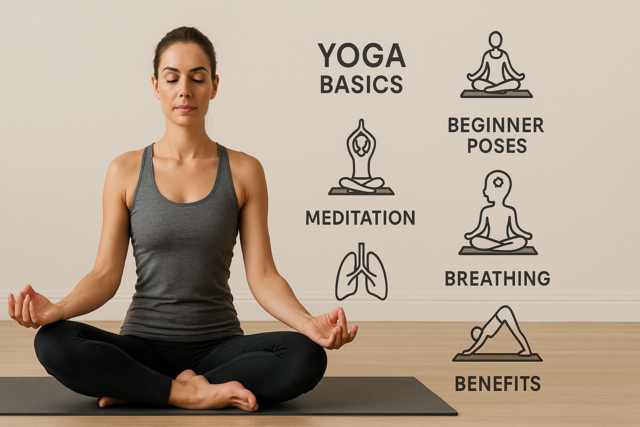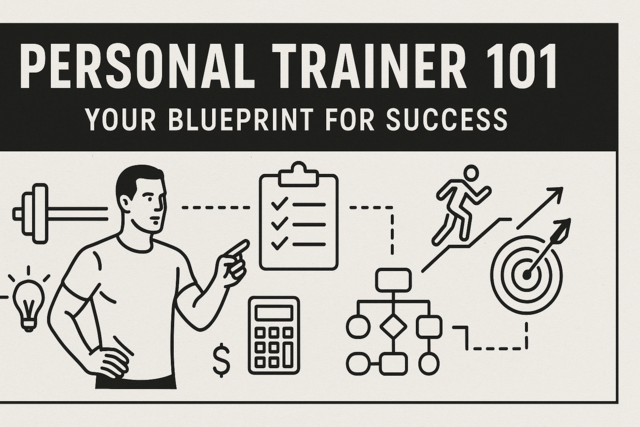Introduction: The decision to become a personal trainer allows many different job type choices to make. If you freelance, you can often work with individuals or even classes in an established gym by paying the gym a percent of what you make or a gym may pay you a set rate to work with individuals or classes with their paying members. This leaves you available to maximize your time by scheduling with more than one facility. You can also manage appointments with physical therapy clinics, or other specialized fitness work with people with disabilities or those rehabbing from injuries. You might find that companies will hire you to come in and offer strength training and appropriate lifting strategies, to teach fitness classes or develop exercise programs for individuals. You can also schedule clients in their own home. This is a great need for an individual who requires more assistance or has difficulty getting out of the house. It also affords you the ability to build a good reputation, loyal clients and when you're ready, enough business to support a small studio of your own.
Equipment is another concern. If you work in an established facility, you will probably have access to their equipment. Part of your research will include finding out what will be most effective in your locale. You will have to visit several places and asks lots of questions. Take good notes. Make friends with some good trainers and learn from them. What works in one area may not work in another. You might also find out about used equipment and leased equipment agencies that do a good job with maintenance and replacement of the machines. Consider a purchase of smaller pieces of equipment to allow you to do independent training on your own time. The space you decide to use will determine your need for equipment.
The space you require will depend upon how you design your initial business. If you go to work for a gym, that is taken care of. If, however, you decided to work in the off hours or totally freelance your skills, then you do have to consider the space available to you. Space to work with clients can range from use of areas in an established gym, a room of your home, the client's home or business, outdoors or a small studio that you lease. So much will depend upon what your vision is. And allow time for that vision to come into fruition. Your plan may be to own a small studio or even a large gym, but your steps for that accomplishment may require you to begin employment with an established business first.
Money is the third and quite possibly the main requirement. Depending on what you decide to do, how fast you want to build your clientele, what you specialize in, and where you are located will determine the cost incurred. Initially you will need money to get certified. Then you may require some personal equipment and finally a space to rent. If you value being debt free, your angle of progression toward your full blown vision may be less steep than if you are willing to go into debt to get there. Again, your vision and your values are connected. Make decisions that connect your vision and your values and build on them.
A. Equipment: Few new trainers start with large facilities of their own. Working with an established facility is a great way to save on the purchase of equipment, or to purchase it along the way and slowly in order to establish your own business in the future, if that's what you want. Many trainers are happy to leave the business, cost of equipment, building leases, zoning and health and safety rules to others and work as an employee. Your goals may lead you to do this and work toward a private business later in your off hours.
Equipment for a new trainer will depend upon which system is chosen for work. An individual who wants to work more with his own clients or homebound people, should have a van for transfer of the essentials.
If your budget is under $500, and your space for equipment is limited, consider this list of basic equipment:
� a jump rope
� stability ball
� cardio step with risers
� dumbbells up to 50 pounds
� exercise bands with varied resistance
� chin-up bar
Each of these offers many fitness opportunities and if their use is maximized will serve you well, offering multi-level and multi muscle/bone/joint combinations for exercising. The space required for storage of these pieces is about 50 Sq. feet.
If you have a bit more money available, your next purchase should be an economy power rack for the more athletic clients, an adjustable bench, an Olympic bar and weight set and a plate rack. This equipment adds another $1000 to your cost, plus the additional cost of space for storage. That would be another 50 sq. feet just for storage. Other items you might consider adding include, a suspension trainer which uses body weight and gravity for resistance, vinyl sand bags and even boxing gear. Kettle bells might be needed for higher level workouts.
Before you make any decisions about equipment, do consider the space you have, not the space you'd like to have. Don't purchase anything in the hopes of finding space. That would be a big mistake. To be successful in this business, you have to combine your vision with your budget and your ability to manage stress. If you don't develop a plan or a system, your work will be affected. In the article on development of a business plan, decisions will be made, so for now you just need to look at your value/vision connections, your strength/weaknesses chart, and the information you are collecting on certification, local gyms, and other trainer information and consider which avenue is for you.
B. Space: Now is the time to talk to local facilities and other trainers to see what kind of market there is in your community for the personal trainer. Find out the opportunity for being employed by an established business, for freelancing, private studios, in-home work and working for chiropractors, physical therapists, or community centers. If you prefer to work entirely for an established gym, you might have the option for a regular paycheck, insurance and other perks. What kind of work you want to focus on, your budget, and your skill level will guide you to make the best decisions for your current situation. Remember that you have a lifetime to grow and change and try new things. You will learn about opportunities that you never would have thought of before you began to focus on your career.
The I.D.E.A. Health and Fitness, Inc. advises that to determine how much space a place has for storage, divide the square footage by two. Half of it should be set aside just for storage. To determine how much space a facility or area requires for the use of equipment, you take the square footage of the equipment and multiply by two. In some states the empty sq. footage required per persons in the space is 50 sq. feet per person. Others require 100 sq. feet per person. Mark that space out and get a concrete idea of what space will be needed. Also check out what the laws are where you live and know that there are laws everywhere for the purpose of health and safety not only for you and your clients, but for your neighbors and your community. It will never do to try and avoid legal requirements. You need to be ethical, honest, and above board in order to be a success in business and to keep your reputation clean.
The space you choose will depend upon many things. Local fire codes will demand so much area for evacuation, and oversee the use of electrical outlets. Access to water and restrooms, ceiling height for exercise, flooring that is safe and easily cleaned along with lighting and structure that will withstand the weights, the suspension, and the abuse that some types of exercise avails is necessary to be considered. On top of that there are local zoning laws that determine if a business can be opened in your residential area, how much parking is required if it is allowed, and special inspections for health and safety. You will be required to cover yourself and your clients with insurance. Do you see another assignment coming? Now is the time to create your list and gather all the information, not after you start your business. Ignorance will only create problems for you and your client base down the road.
Sometimes the best money spent is on a financial manager. This person takes the worry from you and allows you to enjoy the business. A financial manager will keep you within your limits, will counsel you when you have decisions to make and will usually be experienced in many things. Advise about growth, time to make a change and possibilities within your community will be his forte.
It is often the unforeseen costs of business that take a person by surprise. The city, county, and state fees for licensing, for taxes, and for inspections can sneak up on you. Provision of the health and safety codes bring requirements you will have to follow or be shut down. Insurance against theft, loss of property, lawsuits, and accidents has to be purchased. If you decide to begin as an employee of an established center, you may not have to be concerned with these, but you have to check and make sure that you are covered under the centers insurance before you lose what you have worked so hard to attain. Your client will assume you are insured and if they are hurt under your watch, you may be responsible for a lifetime of care. The cost of an accountant or a financial manager may be the cheapest protection for your business that you will find. This person will know about group insurance plans and other possibilities available to you because he is experienced.
D. Conclusion and Assignments: As you pursue this area for work, it is not enough to simply get a certification and go to work. You have to go back and think about what you value and believe in, review your visions for your future and plan your life's work. This career choice could take you in many exciting and interesting directions. Keep your eyes and ears open and continue learning and seeking the advice of others who have gone before you.
Know what equipment you can afford, what you need, and how you can make do with less. There are so many ways to increase the fitness of a person with very little equipment and you will learn this in the course you take to become accredited. Sometimes the best "equipment" that will reap the most reward is the investment in knowledge or getting more certifications and advanced or specialized certifications. Investigate all the ways you can use a minimal amount of paraphernalia. It will save you in the cost of larger and more expensive equipment, storage, and space for its use. Remember that just because you can afford a piece of equipment doesn't mean you can afford to store it, insure it, keep it maintained, and provide space to use it effectively. The cost of anything is much more than the price you pay at the checkout.
You must write down the real cost of everything you buy, you do, and you experience. Sometimes the cost is not money but health. If you decide to learn the fitness of extreme sports, it may create situations that are hazardous. If you become injured, you cannot earn money. Think of all you do as having a cost and act upon that knowledge.
The fact that you decide to go the route of becoming a professional personal trainer may not leave you with the debt that a college education would, but it can still add up. The bottom line is to learn all you can, make informed decisions, and plan.
Your assignments:
1. Complete your chart about the various accreditation classes and cost and begin to narrow it down.
2. Make a list of people who are willing to talk to you, maybe even mentor you about becoming a professional personal trainer.
3. Take another look at your vision for your future. List three accomplishments you want to make in the next three years.
4. Make another T-chart. This one with the pros and cons of working for an established center or gym and freelancing. This will only be worthwhile if you have actually spoken to people who have been there and done that.
5. Find out who some of the local trainers use to help manage finances and set up some interview with them to find out if you click. (This doesn't mean you will hire them, but it will mean when you are ready to make that decision, the ground work is done.
6. Begin to write down your ideas about what you want your job to look like, the hours you want to work, and they money you have to invest.
|
P.T. Tips
Your job as a professional trainer is not to just show your clients how to exercise and assist them in it, your job is also to educate, encourage, and establish a good rapport. Your clients don't need you telling them they need to work harder or that they aren't reaching a goal. They are adults and they know it. They just want you to keep up what you do. Give them some space to make their own decisions and allow them to build their habits as they are able to. Encourage them by e-mailing articles or recipes and talk about fun ways to stay active and eat healthy. Read all the time so you have good ideas to relate. Get to know your clients so you will be better prepared to help them meet their challenges
|




























